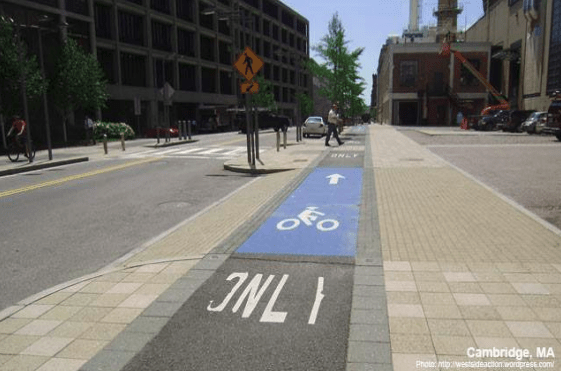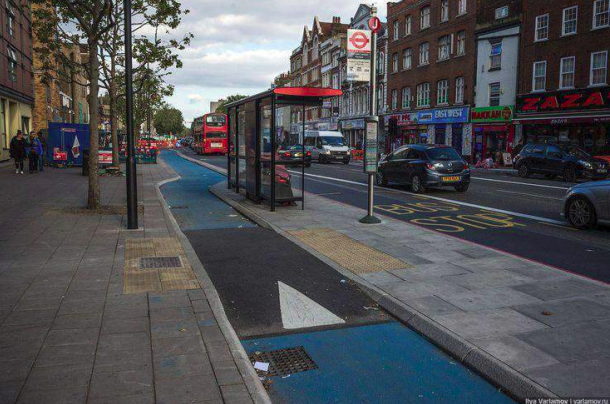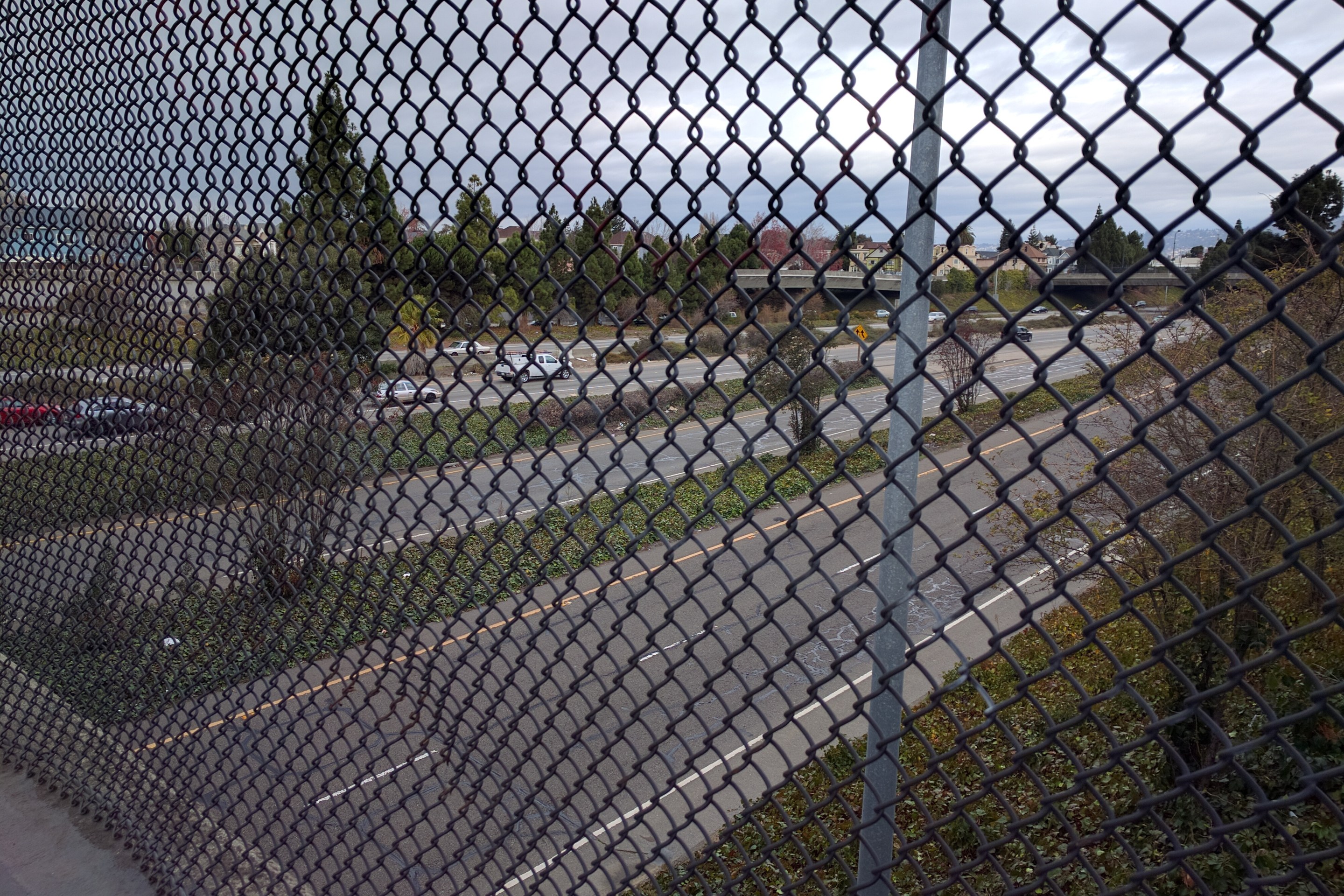Walk San Francisco, the San Francisco Bicycle Coalition, and the Senior & Disability Work Group of the Vision Zero Coalition, are collaborating on bike lane designs and pedestrian safety measures.
On Tuesday morning, Walk SF and the Senior & Disability Work Group held a three-hour meeting, attended by some 50 people, to look at several aspects of protected bike lane designs currently used by the SFMTA, and how they can be modified to assure seamless wheelchair access between the sidewalk, a car, and transit-boarding islands. In addition to the advocates, the charette included staff from the SFMTA, Public Works, Oakland's Department of Transportation, and the San Francisco Mayor’s Office on Disability.
"How can we make a design that protects people who are biking but is also safe for people with disabilities?" asked Cathy DeLuca, Policy & Program Director for Walk San Francisco, in a phone interview with Streetsblog about the charette. "We don't want to cause unintended consequences."
One issue that came up: San Francisco's new protected bike lanes can present challenges to those in wheelchairs--as this photo below from the event description illustrates:

Navigating from the sidewalk to a parking spot can be tricky and hazardous if there isn't a curb cut nearby. But in cities which don't generally have a 90-degree curb, or in cities where the bike lane is at curb height, this is less of a problem., as seen below:

There are complications for the disabled when it comes to boarding transit as well. The new bus boarding islands in SoMa and other neighborhoods highlight this issue: as seen in the image below, the city builds ramps/curb cuts that allow someone in a wheelchair to go down to street level to cross the bike lane and then back up to the boarding island. Advocates are now pushing for a riser (as seen in the lead image from London) so passing cyclists come up to sidewalk level instead. That slows the cyclist down (but they get their momentum back as they roll back down the other side) and permits people with disabilities to move from the sidewalk to the bus boarding island more easily.
UPDATE/CORRECTION: SF has a bus-boarding island with a sidewalk-level crosswalk and ramps for bikes at North Point and Polk (see the comments section for a pic).
"Another option that came out of the charette was just to have the bike lane come up to sidewalk level for the length of the bus boarding island," said DeLuca.

Occasionally these efforts--to adjust bicycle infrastructure to better serve the needs of seniors and the disabled--are described as a conflict. Take, for example, Tuesday's story in the Examiner by Joe Fitzgerald Rodriguez about the SFMTA approving the extension of the 8th Street protected bike lane south from Harrison to Townsend. The article portrays pedestrian advocates as if they're in opposition with the SFBC. "...Josie Ahrens, who spoke on behalf of the pedestrian advocacy group WALK SF, decried the lack of protections for pedestrians from bicyclists," wrote Rodriguez.
In reality, Ahrens spoke in favor of the bike-lane project, and simply called for tweaking the design to look more like the lead image, where the crossing from the sidewalk to the island is level; a key issue from Tuesday's charette. Charles Deffarges, the community organizer in charge of the 8th Street project at the SFBC, spoke just before Ahrens--and he also asked for the SFMTA to improve designs according to what was discussed in the charette (their statements were recorded and are available to watch online at 1 hour 11 minutes and 1 hour 14 minutes).
"We're working with advocacy groups for people walking and people with disabilities to make sure that San Francisco's new street designs improve road conditions for everyone," wrote Chris Cassidy, spokesman for the SFBC, in an email to Streetsblog.

Advocates for vulnerable road users, be they on a bike, on foot, or in a wheelchair, are on the same side because countries with the best bicycle infrastructure--the Netherlands, Denmark, Sweden, etc--also have the fewest pedestrian deaths. Properly designed bike lanes don't just protect cyclists--they add another level of protection for pedestrians as well, by creating a buffer between the pedestrian space and fast-moving cars.
"We've been working with a lot of senior and disability advocates to make sure bike lanes are designed with pedestrian safety in mind," added DeLuca. She said thanks to the charette, city staff now know who to contact to check for unintended consequences of designs.






